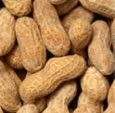Research may offer new method for umami flavour identification

The study, published in Journal of Food Science, reports a new methodology capable of analyzing various reported umami or umami-enhancing compounds. The researchers behind the development explained that the method has a good analytical performance, and can be applied to analyse various relevant food matrices.
Explaining the practical applications of the research, the team of Dutch scientists, led by Leon Coulier of TNO research, said that the method“might be useful for the discovery of new umami (enhancing) compounds,” they wrote.
Umami
The umami flavour is one of the five standard tastes, next to sweet, bitter, salty, and sour, and is usually described as a ‘meaty’, ‘broth-like’, or ‘savoury’ taste.
Research on umami compounds began in 1909 with the discovery of monosodium glutamate (MSG). Since then, Coulier and his colleagues explain that many more molecules, including as guanosine monophosphate (GMP) and inosine monophosphate (IMP), have been studied in relation to umami taste.
“These compounds have shown strong synergistic effects with MSG, and this effect has already been used in food industry,” they noted.
The TNO team said that several molecules have also been described in the research literature as having umami taste or umami-enhancing effects.
“These molecules include organic acids, Maillard-reaction products, peptides, nucleotide derivatives, and amino acid derivatives,”
They added that with an ‘urgent need’ for the formulation of palatable salt-reduced foods to reduce the salt intake of the Western consumer, the umami taste and enhancers of such tastes are gaining prominence in the eyes of the food industry.
New flavours
“Although several umami (enhancing) compounds have been described in literature, it is likely that there are more umami (enhancing) compounds to be discovered,” said Coulier and his team.
They said that whilst, in principle, this can be done by using the metabolomics approach which analyzes all metabolites present in a sample, the approach “involves tedious and laborious procedures which puts high demands on all aspects of the metabolomics workflow, including experimental design, sensory analysis, sampling, analytical chemistry, data pre-processing, and data analysis.”
The new research developed and tested a new method for such identification using liquid chromatography-mass spectrometry (LC-MS) methods capable of analyzing different classes of umami compounds in a targeted approach.
The new technique was validated using tomato and potato samples, which the research team said showed “overall good analytical performance with respect to selectivity, detection limit, linearity, and repeatability.”
Source: Journal of Food Science
Published online ahead of print, doi: 10.1111/j.1750-3841.2011.02306.x “Comprehensive Analysis of Umami Compounds by Ion-Pair Liquid Chromatography Coupled to Mass Spectrometry”
Authors: L. Coulier, R. Bas, M. Hekman, B.J.C. van der Werff, M. Burgering, U. Thissen























